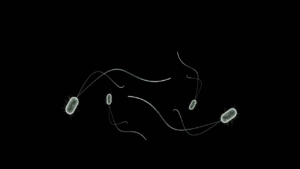There are different kinds of organisms living in the environment around us some of these organisms are large and submerged small and there are also some organisms that are so small that they cannot be seen with the naked eye these organisms are known as microorganisms.

the organisms which are very small and can be seen only with the help of microscope are called microorganisms or microbes at times we see very tiny organisms called fungi they start growing on objects like our shoes clothes jackets etc now we are able to see these organisms because they are present in large numbers and they found in groups called colonies and that is why they are visible to the naked eye but otherwise if we have to see a particular fungi then we have to take help of instrument called microscope an gee or the surface of Bones is also invisible due to the same reason let’s study about the habit at of microorganisms that means where do microorganisms live do you know that right now also there are uncountable number of micro-organisms present all around us since these are microscopic we will not be able to see them through our naked eyes so if you are asked where exactly two microorganisms lives the answer is everywhere microorganisms are found everywhere they are only present the word only means all that means microorganisms are present at all places so are these micro organisms present in the I School regions also where there is freezing cold for instance Siberia and Alaska now if it is difficult for the higher organisms to survive there then it be possible for microorganisms to survive answer is yes we will find microorganisms here as well let’s switch to opposite extreme let’s go to an area where there is extreme heat can they survive in extremely hot areas also yes to your surprise they were able to survive there also amongst the many microorganisms which we find there. there is one kind of bacteria known as thermal files which is found there as the name suggests theremo means heat and sill as means loving these are heat loving Bacterias which can survive only in such hot areas shall we try are gion with pe change let’s take example of dancing we know that Dead Sea is famous for extreme salinity guess what some of the microbes survive here as well bacteria of types hello files are able to survive here as the name suggest hanno means salt felis obviously means loving that means there are salts loving bacterias found in get see also which means there is no place on the earth where we would not find microbes that means they’re present everywhere in air so in snow hot springs saline water and in extreme conditions like extreme hot and extreme cold so if living in such extreme conditions is possible for them then what about the most comfortable condition or and inside the human body yes microbes are found on the surface of our body as well as inside the body but need not worry the microbes inside the body are called normal flora of our body they are also known as good ones that is they do not harm us parts of a microscope there are four most important things in a microscope eyepiece lenses stay heat and light. Light in order to see any thing in the world they require light by throwing light on any object we can easily make out my new details of the object this is also true for microscopic levels the light source is normally below the stage the stage is there we place the slide which we want to examine the class light with the specimen is mounted on to the stage with the help of side clips the bottom of the stage has a hole which allows light to pass through it andlight up the specimen all mechanical stage can move front and back on thex-axis and sideways on the y-axis so wecan focus on different parts of the specimen lenses microscopes have acombination of lenses that are placed insuch a manner that it can produce high resolution images lenses are the most important parts of the microscope thelens is mounted on the revolving nosepieceare called objective lenses the eyepiecethrough which you look at your specimenrests at the top of microscope these binocular lenses have adjustable magnification usually less than theobjective lenses the eye piece can magnify object up to 10 ton and the objective lenses another 100 tonnes this means you’re seeing objects magnified thousand tons electron microscope in early 1900 people begin to understandhow to manipulate electrons experiments with these tiny particles lead to there alization that they could use them tosee microscopic things with atomic details with electron microscope an electron microscope shoots a steady be amof electrons on to a specimenthese electrons will bounce back where they are detected by a sensor this sensor makes an image by reading thetime it took to return using this technique scientists are able to achieveresolution of 1 million times well now that you have under stood about the various parts of microscope go throughthe label edgo off compound microscope.

